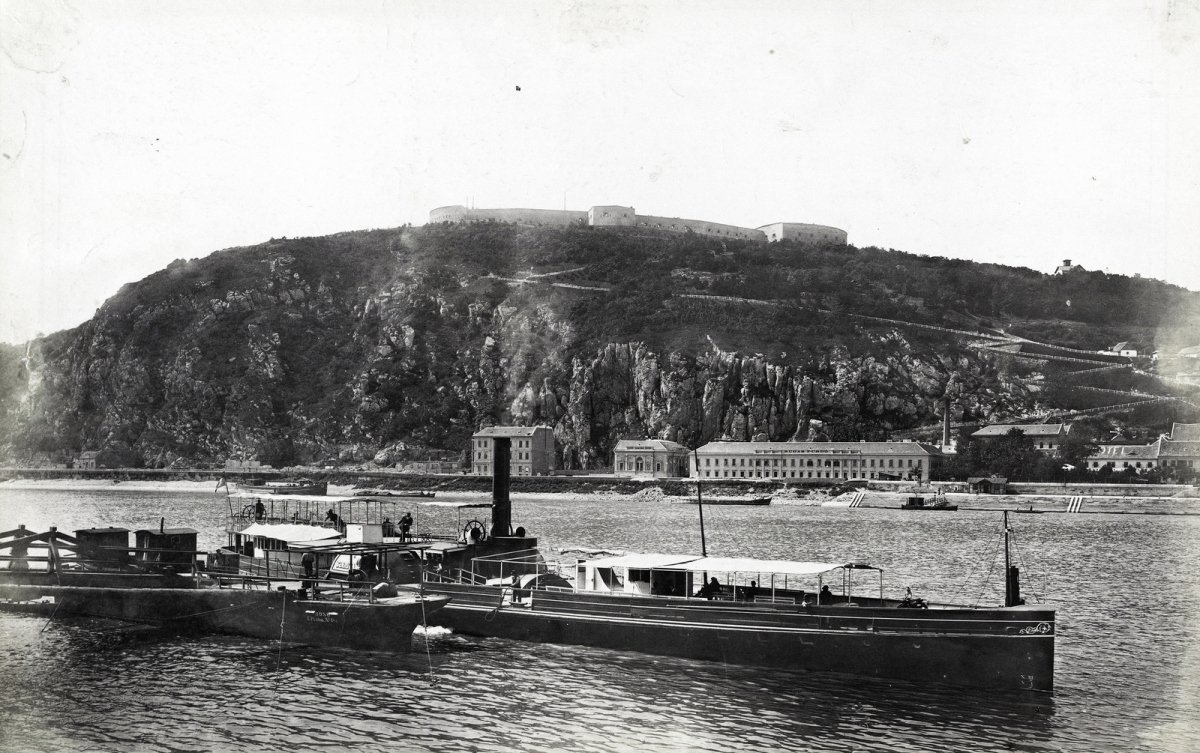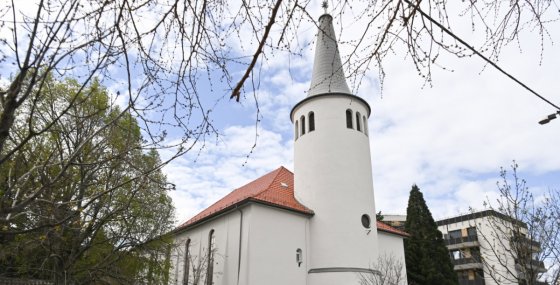In the middle of Budapest until the end of the 19th century, two iconic buildings, but no longer of military significance, were under military control, one in the middle of the city, and the other "on top". The New Building in Lipótváros, the Citadella on Gellért Hill. Both were acquired by Budapest 125 years ago, in October 1897, but the handover had already been decided and even a law was passed earlier. The conditions were stated in Article 20 of 1894:
"1. § The Minister of Finance is authorised to sell the following properties located in the capital city of Budapest and to be taken over from the management of the military government: namely the New Building, the Károly, József and Florián Barracks, as well as the Gellért Hill fortress; to acquire the necessary plots for the construction of new barracks for the proper accommodation of the military, and for the construction costs of the barracks, six million four hundred thousand forints from the incoming purchase price can be made available to the joint Minister of War."
The New Building, this huge four-cornered monster, was built for military purposes, although for a long time it was not really clear what exactly it was for. For its construction, Joseph II gave instructions after visiting Pest and Buda in 1783, where he was dissatisfied with many things. The purpose of the construction, which began in 1786, was never actually determined by the king. The costs of the huge building were covered by the wealth of the monastic orders dissolved by "the king with a hat.” [Hungarians called him that because he never coronated himself - transl.] In fact, its fate has always been uncertain, the half-finished building first housed French prisoners of war, it was thought to be sold, and then it became barracks and then a prison. It was never popular among the people of Pest, not only because its enormous block encroached on the city, but also because they did not forget that Prime Minister Lajos Batthyány was executed within these walls.
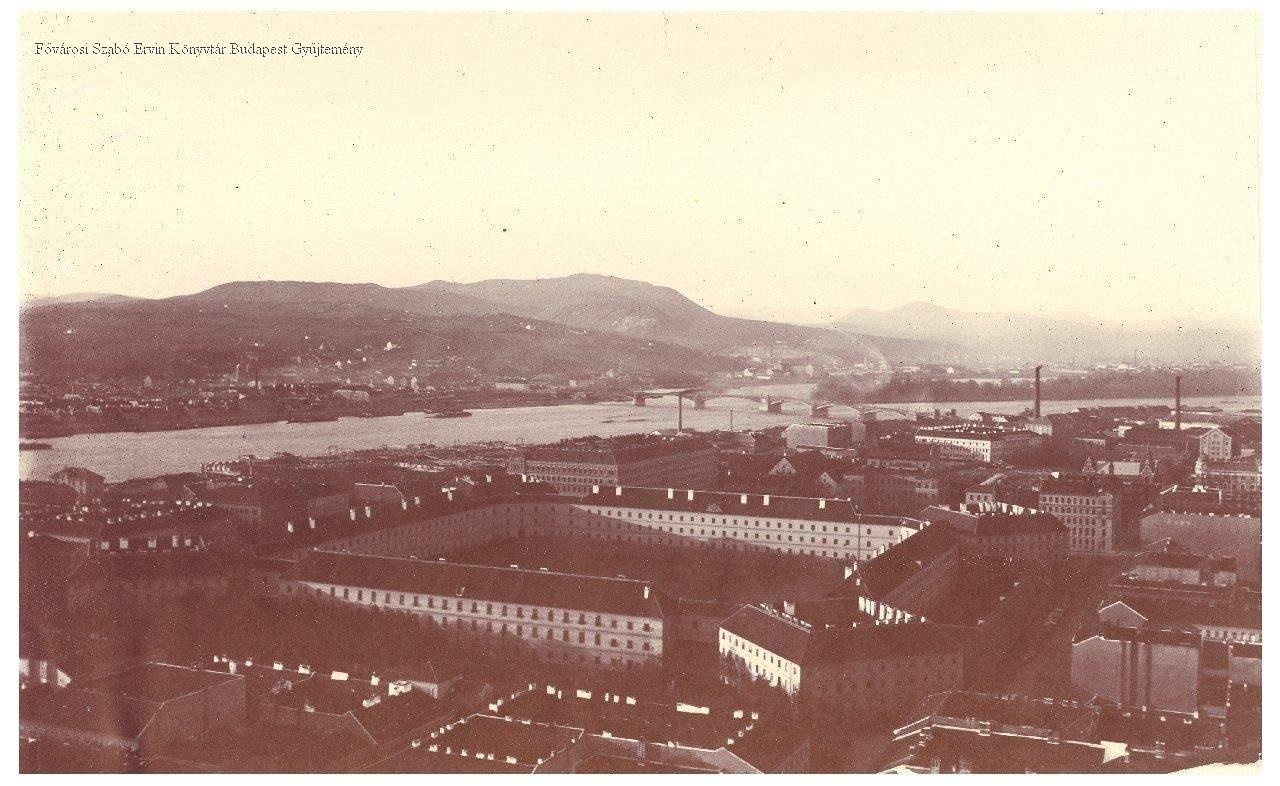
The huge block of the New Building in the 1880s (Photo: FSZEK Budapest Collection)
Meanwhile, the New Building was surrounded by the city in the second half of the 19th century, it is enough to think that the Parliament was built northeast of it. The handover itself took place briefly, the Pesti Napló wrote as follows on 23 October 1897:
"The representative of the military authority, Colonel Rudolf Khittel, director of military construction, coldly and calmly announced to the representatives of the capital: "I hand over the New Building to the capital. Ministerial adviser Imre Rupp, the vice-chairman of the Public Works Council, shook hands with the saluting colonel, signed the protocol, and with this, the largest barracks in old Budapest became the capital's property."
At that time, the building was already empty, the military had practically abandoned it; they almost immediately started the demolition of the New Building on 16 November, and demolished it completely, today Szabadság Square and the surrounding buildings stand in its place, and only the Batthyány eternal flame remembers this building indirectly since it is burning where the prime minister was executed. The possibility of demolishing the New Building and thus freeing up a huge empty area in the heart of the city represented a huge opportunity for the city developers, as summarised in the 28 November 1897 issue of Magyar Ipar:
"There is no doubt that there will hardly ever be another such large, contiguous area within the capital, which can be regulated so freely and relatively unrestricted. This is proven by the public construction committee of the capital when in its last report on this subject it uses the following introductory words: We do not consider it likely that the authorities of the capital would again soon find themselves in such a position that they would be able to deal with the arrangement and regulation of such a large and free space as the plot of the New Building."
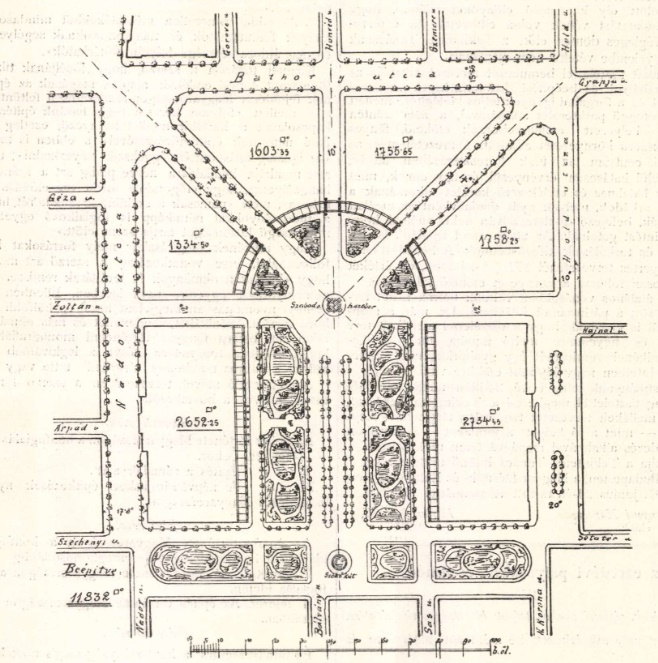
One of the layout plans for the site of the New Building (Source: Magyar Mérnök és Építés Egylet heti Értesítője, 1897, page 125)
The other building that the Capital took over 125 years ago was the Citadella, which was perhaps hated by the people of Pest more than the huge, 36,000 square metre building monster in the middle of the city. Why? On 30 October 1897, the Pesti Napló accurately wrote the answer:
"The fortress, built of solid blocks of natural stone, became the property of Budapest today, to the great joy of those worried patriots who feared that one fine day if the order came, the guileless capital would be bombarded to ashes (...). When a citizen climbs the ridge of Gellért Hill and looks out through the crenelles, the first thought that comes to their mind is that not a single house would have remained intact from the huge sea of buildings if the cannonballs had once set off in triumph. The death-spewing monsters were standing in the crew rooms, and officers and civilians could have shot Budapest to pieces without any effort while smoking a cigarette."
The Citadella was built after the War of Independence, not actually to protect the city, but to intimidate it. As a fortress, it was already obsolete when it was handed over, but the whole city could be kept in check from there, which is why it was by definition not the most popular building. Even though the compromise happened, and despite the fact that the oppressive Emperor Franz Joseph, who executed the Hungarian Prime Minister, became our "father king", people did not forget Haynau and Hentzi. This mistrust was reinforced by the fact that the fortress was practically constantly closed to the public, and that no Hungarian soldiers were stationed there, but that the garrison was brought from the Czech Republic or Galicia, and as soon as the service of the current crew was over, they were immediately transported.
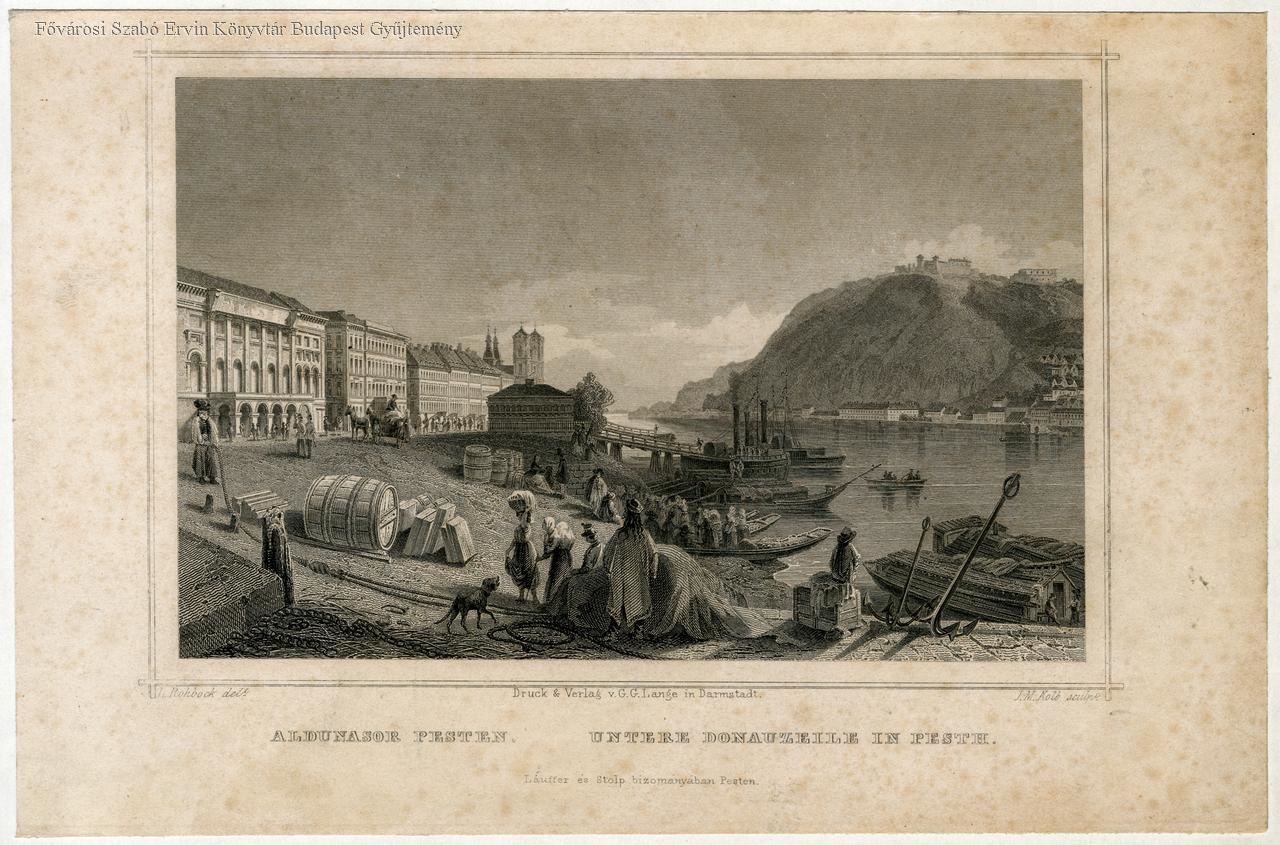
The Citadella after its construction in a drawing by Ludwig Rohbock (Source: FSZEK Budapest Collection)
A special delegation from the Public Works Council and the leadership of Budapest set out to take over the Citadella. After they toured the fortress with the outgoing commander of it, the Budapest military commander, Colonel Rudolf Khittel, the same one who also handed over the New Building, wanted to show what it was like to live locked in the castle, so he sent one of the soldiers out and locked the main gate from the outside. However, it did not want to open again, so the lords of Pest started wondering if they wanted to arrest them. But it was only a temporary problem, after the gate opened again, the speeches were made, and Colonel Khittel ceremoniously handed the key of the fortress to Ministerial Councillor Imre Rupp, who was there representing the Public Works Council, who passed it on to the Capital Councillor János Vasziljevics, thus indicating that the fortress is now the property of the Capital - the Pesti Napló wrote the story the day after the handover.
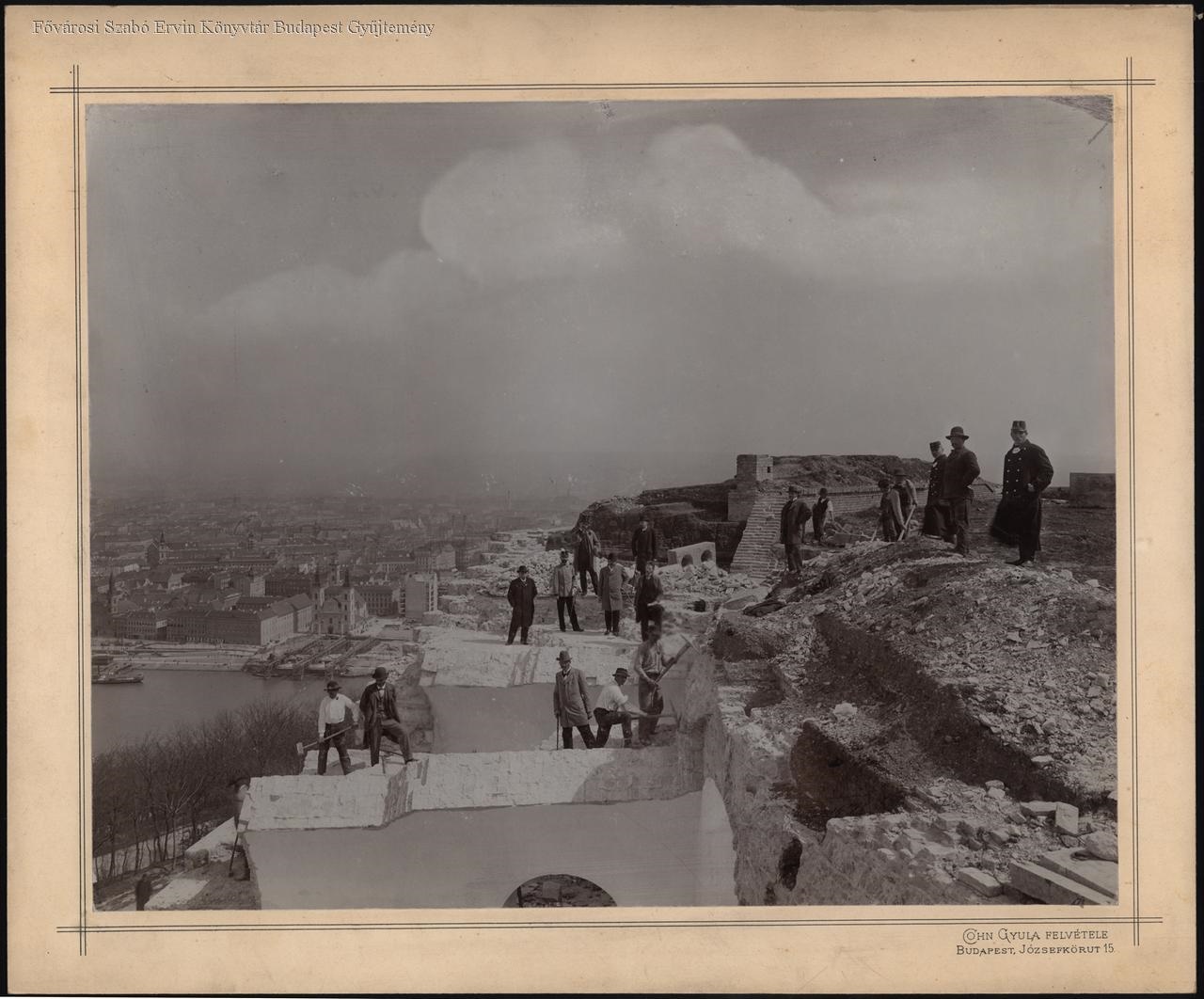
The symbolic demolition of the Citadella in 1899 (Photo: FSZEK, Budapest Collection)
In fact, the army did not leave until 1899, until then only a few soldiers of the garrison were "guests of Budapest" in the fortress. The huge, massive fortress was symbolically demolished in 1899, i.e., some sections of the walls were dismantled, thus depriving it of its military significance, but it has been a constant dilemma ever since, what to do with this building, whether it should be demolished completely or utilized in some way.
This year, however, its reconstruction began, a tourist attraction, observation decks and a park within the walls will be created, after which it will be opened to visitors. On more than 1,700 square metres between the walls of the western rondella, a permanent exhibition showing the war of independence of the Hungarian people will open.
Cover photo: The Citadella after 1890 (Photo: Fortepan/Budapest Archives, Reference No.: HU.BFL.XV.19.d.1.08.016)

